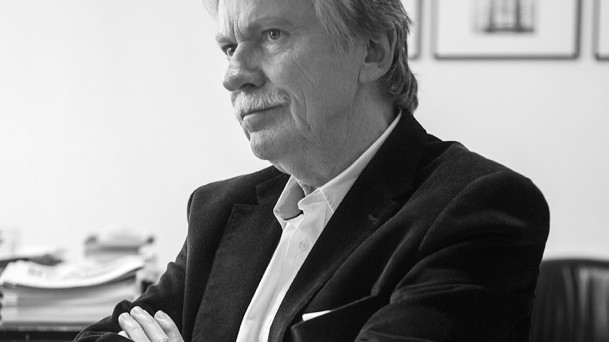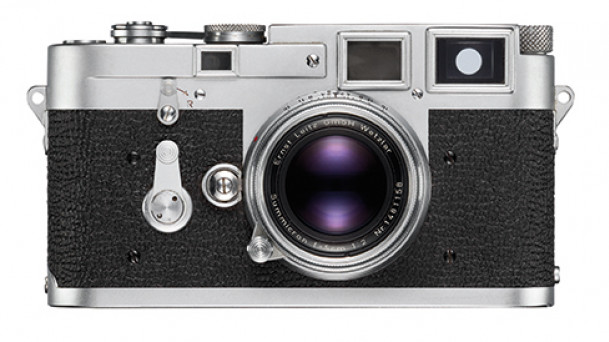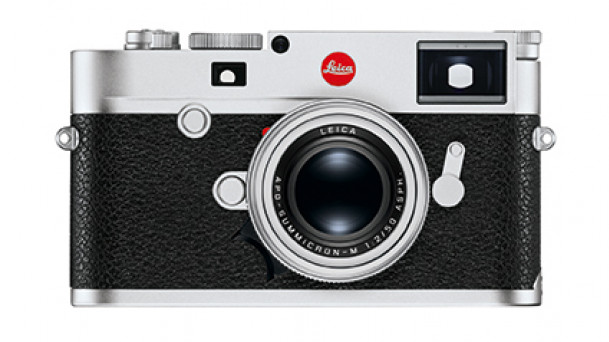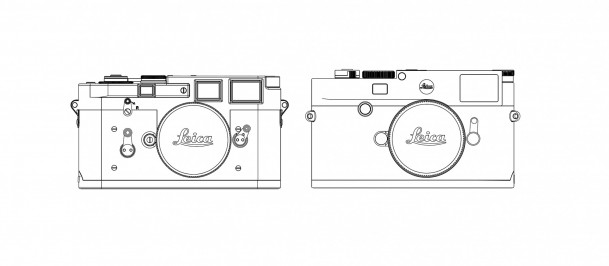Leica Design
The history of Leica’s design is unparalleled. At the University of Art and Design Offenbach am Main (HfG), Prof. Dr. Klaus Klemp and his students have unraveled the golden thread of the brand with the red dot.
The appointment with Prof. Dr. Klaus Klemp takes place in the Museum Angewandte Kunst Frankfurt (Museum of Applied Art in Frankfurt). In the curator’s office under the roof of the old Villa Metzler, they are all lined up, the legendary hi-fi systems made by Braun, next to numerous Nizo film cameras and projectors. It was Dieter Rams who gave them both their unmistakable and ageless form. There is next to no-one who knows the legendary designer and his iconic products better than Klaus Klemp. Just now, he has published the first catalogue raisonné.
“Really iconic designs are rare,” admits Klaus Kemp. For him, the Braun products from the Dieter Rams era are of such a design; just like the Porsche 911 and the Leica M. Recently, Klemp has focused his attention on the design of the Leica cameras. In a fashion, the professor for the history and theory of design at the HfG regards his doing so in collaboration with his young students as his assignment: “You only comprehend the history and theory of the design if you examine the products which gave birth to it,” points out Klemp. “And about one and a half years ago, we had the great opportunity to do so at Leica’s.”
DNA and family tree of the Leica cameras
The students took a close look at the different phases and product generations: from the initial model of the Leica to the first Leica which was launched in 1925 and the Leica Thread Mounts; at the DNA of Leica M which started out in 1954 and followed the path for more than six decades to today’s Leica M10; at the family tree of the single-lens reflex cameras which sprang up in 1964 and only ended with the R9 in 2009. A group of students analyzed the Corporate Design of the brand and the different means of advertising from the 1920ies until today. “We had access to the Leica archive, to documents and historical products,” relates Klaus Kemp, “and the students were given the chance to examine the current cameras with regard to optic, haptic, and application.”

»This is how you vividly convey the history and theory of design; you are literally able to grasp it – all the more if you have such outstanding design products as Leica’s right on your doorstep.«
Prof. Dr. Klaus Klemp
The gained knowledge was systematically collected and processed. In accordance with the so-called “Offenbach method”, the students included various aspects into their considerations: the cameras were not only analyzed under formal aesthetic criteria but also with regard to their indicative and symbolic function – or as Klaus Kemp puts it: “Each product is invariably also a symbolic representation; in terms of its indicative function, on the other hand, it is examined as to how self-explanatory products or operating elements are.”
Interviews with designers and photographers
But how do you design a Leica camera? Which approach do the designers take and which goals do they pursue? And what do photographers appreciate with regard to form and function of a Leica? In order to find out, the students got the unique opportunity to interview the relevant designers of the past 65 years, such as Heinrich Janke who was significantly responsible for the form of the Leicas M and R from 1954 or with members of the current Leica Design Team, Mark Shipard and Christoph Gredler. The students gained an incredible amount of insights from their meeting with the famous photographer Barbara Klemm with whom they talked about in what way and to what extent a camera influences the photographic style and the manner in which pictures are taken.
“These interviews were really marvelous for the students,” enthuses professor Klemp. “This is how you vividly convey the history and theory of design; you are literally able to grasp it – all the more if you have such outstanding design products as Leica’s right on your doorstep.” It remains to be seen if anything else will result from the intense collaboration. Klaus Kemp could imagine to make them into an exhibition or a publication. Maybe then the golden thread of the brand with the red dot could be unraveled another bit further.

1954 – 1966
With its unmistakable form and outstanding function, the Leica M3 has significantly influenced all subsequent generations.

2017 – 2020
The Leica M has been developed over several generations. It has remained true to its design. Until today. Pictured here: the Leica M10.
Design history of Leica Camera
Hochschule für Gestaltung Offenbach
Lead
Prof. Dr. Klaus Klemp, Dipl. Des. Pia Scharf
Students
Lara Bohe, Clara Brandt, Marlene Bruch, Andreas Grzesiek, Teresa Herzog, Carina Hinterkircher, Amelie Ikas, Paulina Kämmerer, Yujin Kang, Stella Krause, Till Maurer, Jonas Theisinger, Yuquin Wu.
Additional Information:
www.hfg-offenbach.de
